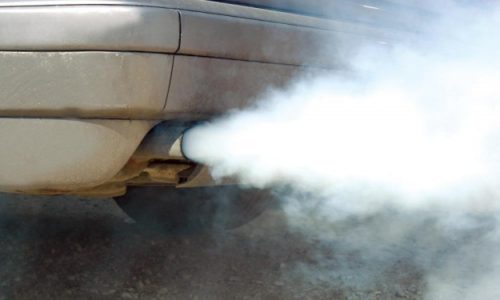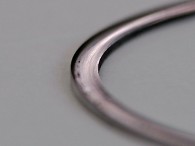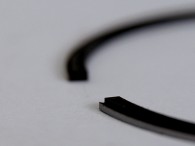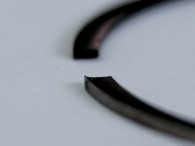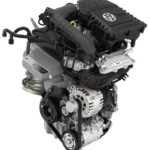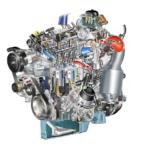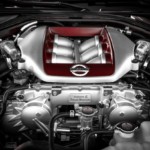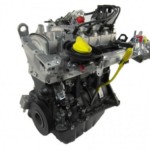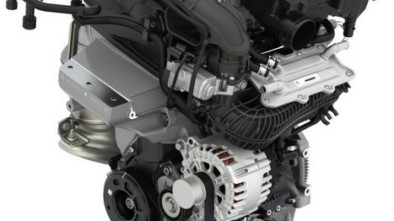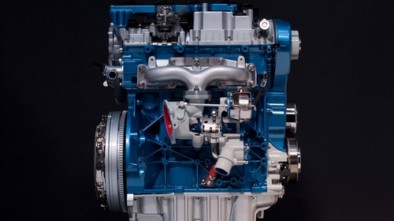What does blue smoke from an exhaust mean?
WHEN THE EXHAUST SMOKE FLOODS!
Every day on the road we can notice at least a few cars emitting characteristic bluish smoke from the exhaust. Of course, because of our mentality, they are usually the subject of ridicule, but that is, in fact, just a confirmation of what kind of economic situation we live in, and what kind of cars we drive. What are the causes of bluish smoke from the exhaust and how to prevent such a malfunction at all?
Due to the economic and political situation in the country, we are probably the only country where you can read the text on how to prolong the life of an engine that, perhaps, should have "died" a long time ago. The reason for such inscriptions lies in the fact that the vast majority of vehicles in Serbia have several hundred thousand kilometers in wheels. The most devastating thing, however, is that such a situation has begun to be accepted as quite common. Although modern cars today are overloaded with various electronic circuits, it is still crucial what kind of material the most loaded engine parts are made of. The very concept of the SUS engine has survived from the first production until today. So, the basic idea, without revolutionary changes, has been retained with the most modern cars. The finesse was refined and metallurgy advanced. However, the law of supply and demand, and the satisfaction of the average customer led to the fact that cars have never been more reliable than today. We can easily determine that there is no bad car today. The old "wisdom" that one manufacturer has a good sheet metal and another an engine, falls into the water. Today, any car can cover hundreds of thousands of kilometers without major engine damage, while sheet metal rust has become a thing of the past. Cars from the beginning of this millennium (which we are most interested in this case) contain a technique that represents the beginning of the fastest car development that the world has noticed. Safety elements such as airbags, ABS brakes, Traction Control, diesel engines, which represent the European boom in the technique of making diesel engines, today represent the vast majority of vehicles on our roads. However, some things like engine lubrication, and fuel injection techniques have been brought to such a level that this can pose a major problem in an unregulated market. Today, it is simply impossible to cross the road and not see a bunch of cars leaving a "smoke screen" behind. Such cars usually emit bluish smoke from the exhaust, which is a sure sign that the engine is burning as well landing. Several factors can crucially affect this problem.
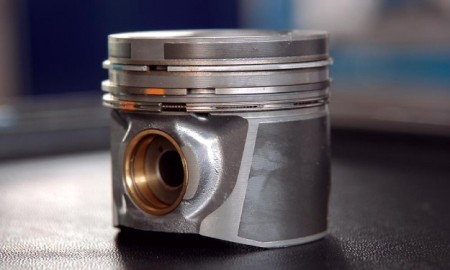
Piston rings or links are placed at the top of the piston. Each link has its opening and its task. New links in all cases have an ideal fit on the cylinder liner and therefore an ideal seal.
The first "address" responsible for emitting blue smoke from the exhaust are, of course, the piston rings known as hoops. When it comes to friction, hoops are one of the most loaded elements of a car engine. They are located on the pistons and have the role of a so-called movable seal. Theoretically (and almost practically), no moving metal part of the engine should be touched. Each engine is designed so that at (almost) every moment there must be a thin oil "film" between the moving metal parts. This is also the case with the cylinder liner and link. Each piston has three (in some cases four) links that serve to maintain proper compression and to clean the cylinder of oil that collects on the cylinder walls. When the links state (which are, by the way, made of specially alloy steel), due to the high pressure prevailing in the compression space, the oil penetrates into the compression space and the engine loses its ideal compression ratio, resulting in a drop in power. Along with the fuel, oil begins to burn, which the links failed to "scrape", which results in the appearance of bluish smoke from the exhaust. Of course, in order to compensate for the engine power, a larger amount of fuel is needed.
The photos show some examples of spent piston rings. Due to the work, it is normal for the links to wear on different parts as well. Depending on the position of the link, they are also used differently. In any case, in addition to the damaged links, oil will flow from the engine pan and burn in the compression chamber.
In normal operation, the links are usually destroyed after several hundred thousand kilometers and we can say that today's modern engines, with proper maintenance, can exceed a minimum of 300.000 kilometers. However, this problem can also occur at 100.000 kilometers and even 20.000 kilometers. Simply, the links are so delicate that even a slight overheating of the engine can lead to a loss of elasticity. Of course, smaller displacement motors suffer higher loads and therefore smaller links. Engines of larger working volumes, of course, have larger links, that is, a larger surface to which pressure is distributed. This is why large engines can be operated without interruption for millions of miles. If there is such a failure on the car engine, the only solution is to replace all the links. Otherwise, due to the distortion of the compression ratio and the mixing of oil and fuel, very quickly other parts of the engine may be damaged to such an extent that no repair is worthwhile. Links are, by the way, very cheap parts of the engine, but replacing them is extremely complicated, because, practically, the complete engine has to be disassembled. The price ratio of parts and completed works can be up to five times in favor of completed works.
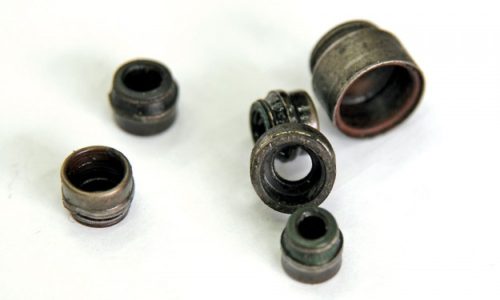
This is what worn valve stem seals, also known as valve seals, look like… In any case, through the damaged seal, the oil that lubricates the camshafts can penetrate the compression space.
The next cause of the appearance of such smoke is the worn-out seal of the valve stem or, "masterfully", the valve rubber. Each valve has a special seal, through which its stem slides. When this sealing bearing wears out (again if not due to age then due to overheating), oil in certain quantities begins to penetrate the compression space. In this case, the problems are much smaller and can be solved very quickly. Also, new cars have proven to be more sensitive to this problem than old ones due to the very high stresses to which the valves are exposed. It is not uncommon on some models of certain manufacturers to have this problem even before the engine "turns" 100.000 kilometers. Fortunately, valve seals are cheap, while the biggest cost is the cost of labor.
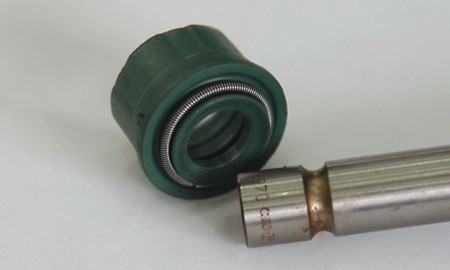
Correct seal, fits on valve stem. It is very inexpensive and very simple, but defective can cause a lot of headaches and cause constant oil refill, which of course costs.
However, sometimes we can cause this kind of smoke ourselves. Today we can find dozens of different types of oils on the market. The biggest problem with this is copies of parts from reputable manufacturers that can only guarantee the early death of the engine. Another problem is the so-called "light-weight" oils used in recent generations of engines. These oils, which typically have a graduation of 5W40 and even 0W20, reach the camshafts of the engine faster, reach the operating temperature more easily, and are very resistant to thermal stress. However, their advantage in the case of older generation or high mileage engines is, in fact, a disadvantage. Due to the very low resistance these oils create, they penetrate very quickly to all parts of the engine, and in the event that the links are damaged (and definitely after 150.000 or 200.000 kilometers), the oil will easily find its way to the compression space between the link and the cylinder wall. . That is why in older car models or in high-mileage cars one should be moderate in choosing the oil gradation, and in this case a higher price may not mean a better solution. Today, for older cars, the 10W40 is the optimal choice.
However, the bluish smoke from the exhaust does not have to be an immediate alarm signal. Due to the mileage, other parts of the car feel the depreciation, and very easily that smoke can be the product of combustion of the so-called "cells" that are in the catalytic converter or in the middle and rear pot. Due to the dilapidation of the exhaust barrier, they can very easily break off and block the path with exhaust gases, and come to a direct impact of hot gases. These baffles can very easily start to burn out gradually, which can lead to false alarms when it comes to the engine. However, such a failure should be taken very seriously, because the moment the bulkhead breaks off and becomes an obstacle to the exhaust gases, there is a greater engine stress and a different vacuum, which directly affects engine performance and fuel consumption. The guarantee of longevity of an engine is primarily its gradual development in the first months of driving. Only when everything "lies down" in its place can the car be subjected to maximum loads. This is certainly one of the guarantees that the links will be longer lasting, and probably that they will outlive all other elements of the car. Finally, it should be mentioned that the only way to extend the service life of the car is regular maintenance. Only then can you avoid being the most conspicuous participant in traffic.
Retrieved from: proauto.ba
Recommendation of similar texts:

Hi there, I am Mladen and I am an auto enthusiast. I started this blog years ago to help like minded people share information about latest cars, car servicing ideas, used car info, exotic cars, and auto technology. You will find helpful articles and videos on a wide variety of cars - Audi, Mercedes, Toyota, Porsche, Volvo, BMW and much more. Ping us if you have anything cool to share on latest cars or on how to make older cars more efficient, or just want to say hi!

